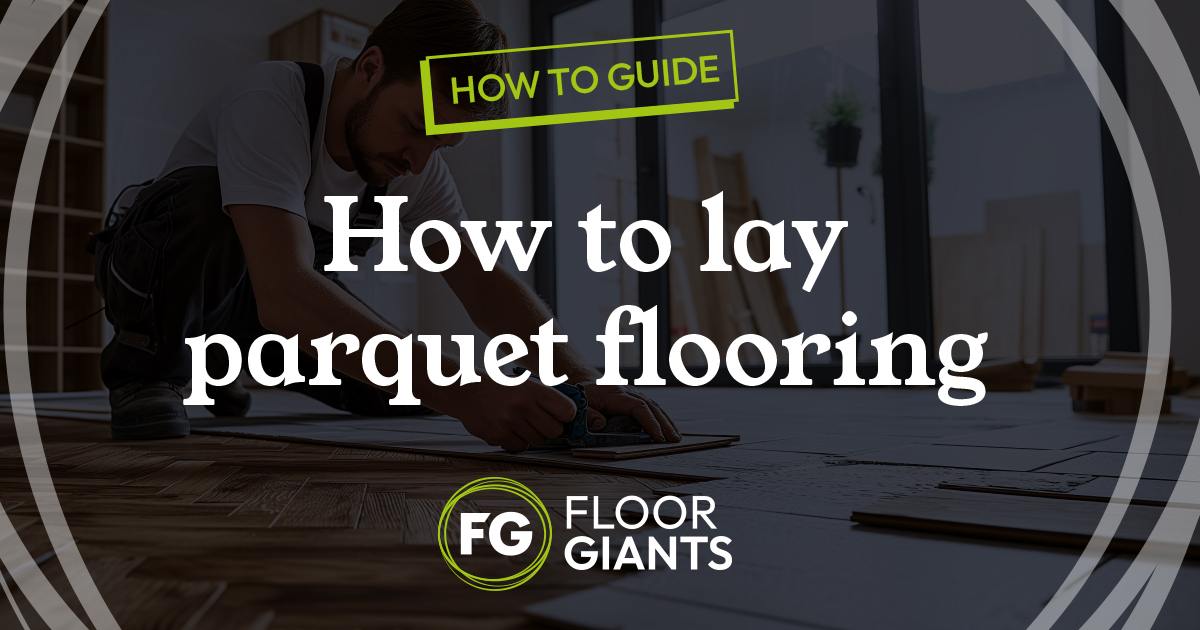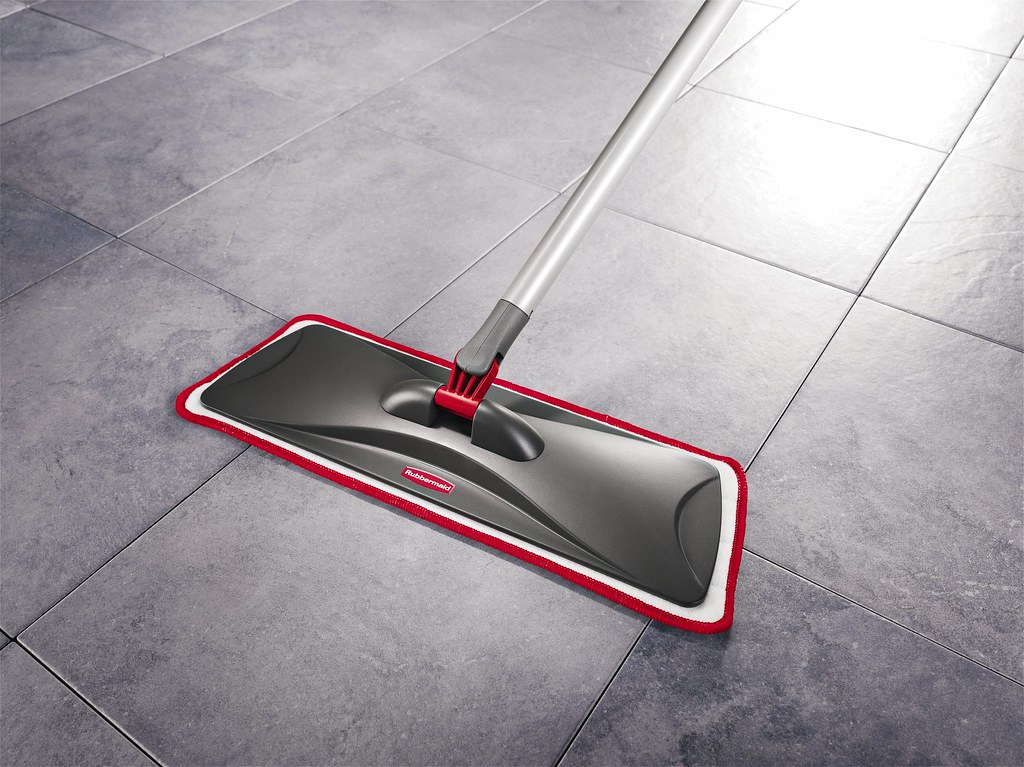How to Lay Vinyl Flooring Guide
How to Lay Vinyl Flooring Guide

Vinyl flooring is an option that presents the best of both worlds. Not only does it successfully recreate the chic, classic aesthetic of wooden or tiled flooring, but it does so at a significantly lower price point.
If you’ve not come across it before, vinyl flooring is a type of synthetic flooring, made from a blend of vinyl resins and plasticisers.
It offers property owners a wide range of key benefits, including a high degree of durability and water resistance, ensuring that your new flooring will continue looking flawless for many years to come. Plus, it is remarkably low maintenance, available in a huge variety of colours and designs, and it is also one of the most affordable flooring options available.
What’s more, vinyl flooring is also known for being deceptively easy to install, even for DIYers without prior flooring experience.
If you’re looking to invest in new vinyl flooring for your property, keep reading. Below, our flooring experts have shared their complete, step by step guide to laying vinyl flooring.
Guide to Laying Vinyl Flooring
You will need the following equipment:
- Vinyl flooring sheets
- Measuring tape
- Straight edge
- Utility knife (or a carpet cutter)
- Trowel
- Roller
- Seam sealer
- Adhesive trowel
- Gloves
- Eye protection
Step-by-step Process for Laying a Vinyl Floor
1. Prepare the subfloor. Start the process by emptying the room and cleaning and preparing the subfloor. At this stage, you might need to repair any cracks or dents in the subfloor.
2. Lay the underlay. This will need to be spread over the entirety of your subfloor.
3. Measure the room and cut the vinyl. Mark the centre line of the room. Then, using a utility knife, cut the vinyl flooring to the size of the room. However, make sure that you allow for a 5-inch overhang along the walls (cutting your vinyl flooring a little oversized at this stage will ensure that the end result is as neat as possible).
4. Conduct a dry fit. Test how well the vinyl fits in the room, by performing a quick dry fit. Lay the flooring in place (without applying any adhesive), and trim down any areas where the fit is too loose.
5. Apply the adhesive. Once the vinyl fit has been tested, remove the vinyl flooring and start to apply adhesive onto the subfloor. The best way to do this is by using a trowel, and working your way across the room from one side to another, in small sections.
6. Install the flooring. Once the adhesive has been applied, carefully place the vinyl flooring. The best way to do this is by ensuring that the flooring is always aligned with the room’s centre line.
7. Roll to ensure a smooth finish. When the flooring is laid in place, use your roller to fix the flooring down, and ensure any air bubbles are removed.
8. Trim away any excess. Finally, use your utility knife to trim any excess vinyl along the walls. Allow the flooring to set (typically, this takes around 24 hours) before you walk on it.
Common questions about laying vinyl flooring
Below, you can find our answers to your most common questions about laying vinyl flooring.
How do you measure vinyl flooring?
Measure the length and width of the room, and calculate the total square footage of the room by multiplying these two figures together.

Once you have calculated the area of the room, round up this figure to the nearest whole number. This will allow you to accurately determine how much vinyl flooring you need to order.
Do you need an underlay for vinyl flooring?
Although it is not absolutely essential to have an underlay, it is highly recommended.
An underlay is a thin layer of material that is positioned underneath the flooring, sitting in between the vinyl and the subfloor.
By using an underlay for your vinyl flooring, you can create a smooth and level surface for laying the flooring. Not only does this make installation significantly easier, but it also makes the end result a lot neater, and will help to extend the lifespan of your new vinyl flooring.
How to prepare and clean your floor

Firstly, you will need to remove any old flooring from the floor. Then, prepare the subfloor so that it is completely clean and bare.
To do this, you will need to sweep the flooring area, ensuring any dust, dirt and general debris is removed.
Finally, check your subfloor for cracks or holes. If you do spot any flaws, use a floor levelling compound to repair any damage. Then, once the compound is dry, sand down any raised areas, to ensure the subfloor is smooth and level.
Can you have underfloor heating with vinyl flooring?
Yes, you can have underfloor heating with vinyl flooring.
In fact, most types of vinyl flooring are compatible with underfloor heating systems. But, it is important to note that this is not the case for all types of vinyl flooring. So, you will need to double check with your supplier or the manufacturer that your choice of vinyl flooring is compatible with underfloor heating, before you purchase.
How do you join vinyl sheets?
Vinyl sheets can be joined through a process of seam sealing. This involves using a specialist seam sealer (these are precisely designed for vinyl flooring) to seal the two joints together.
You can purchase seam sealers online, or even rent them for your project.
How to fit vinyl around difficult areas
If you have any difficult areas in your room - such as pipes or radiators - then we suggest adding a few extra steps to the process outlined above.
When it comes to cutting the vinyl flooring to size, leave a 5-inch overhang around any of the difficult areas in the room. You will need to leave enough material to wrap around the obstacle (without including so much excess that it creates a bump in the floor).
Then, once the vinyl has been laid and fitted, trim away the excess material around these areas, using a utility knife.
At Floor Giants, we offer a wide variety of luxury vinyl flooring within our range. This includes a huge range of different design styles, colours and patterns. You can browse through our entire range of luxury vinyl flooring online, or in-person at one of our many UK stores.
If you would like to find out more about vinyl flooring, or purchase luxury vinyl flooring for your home, contact the team at Floor Giants today.





